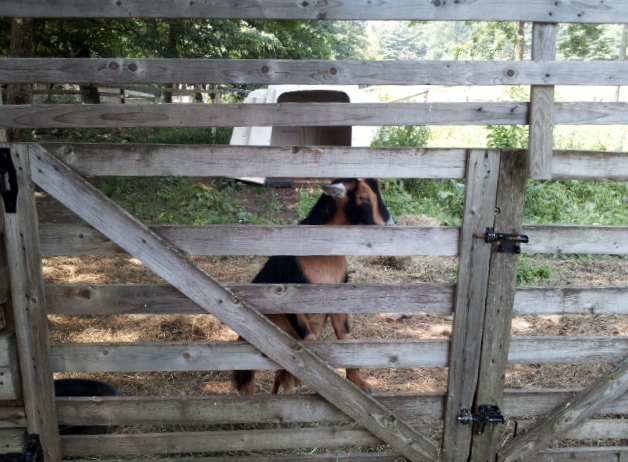 |
| Wouldn't you know, we'd pick the hottest day to visit a working dairy farm. |
 |
| The temperatures were in the high 90's on this day. These are jersey cows. |
 |
| This is our schedule today on the farm. We didn't get there until 1:00, so our fist stop was at the cow barn. |
 |
| The heat is unusual for this area. The summers here are usually in the high eighties. This guy told us some information about Jersey dairy cow. . |
 |
| This is their biggest and best producing cow. |
 |
| The female jersey cows spend most of their days inside when it is hot, under fans. They are let out at night when it has cooled down. The farm has about 80 cows. |
 |
| While waiting for our 1:45 class, on "What happens to the milk", we went into the calf nursery room. Calves stay in the nursery until they are 3 months old. Then they can go outside. |
 |
| You can pet them, but you are not to let them lick you. |
 |
| This calf was born 3 weeks early. |
 |
| We went outside to catch a breeze under a tree. The cows that are out in the field are either pregnant or too young to get bred yet. |
 |
| This is a sanitizing bag that you walk over to sanitize your shoes as you enter and leave the barn area. |
 |
| Out in the field, there were two more draft horses. They are wearing their "Zorro" masks to keep the flies from biting their eye area. |
 |
| We headed to the farm house for the 2:15 churning butter session. |
 |
| Front of 1890 house. |
 |
| At the back of the farm house, we found shade and a breeze. This is the restored farm house where the manager of the farm lived way back in the 1800's. |
 |
| They sell ice cream on the back porch, so bring some money. |
 |
| The milk was churned by hand in a butter churn for 30 minutes. The instructor let all the children take a turn. Then the instructor poured off the milk fat from the butter. |
 |
| Then it was time to wash the butter. |
 |
| I asked her why you had to wash the butter. She told us that if the milk fat is not washed off, the butter would spoil very quickly. |
 |
| She poured clean water into the bowl of butter, and turned the butter in the water. Then she would pour off the milky water. She did this many times until the water ran clear. |
 |
| After the butter was washed everyone got to taste fresh made butter on a cracker. |
 |
| At 3:15, it was back at the barn for " Introduction to Milking". Notice how big the udder is on the cow. |
 |
| This cow has been milked, and her udder is much smaller now. |
 |
| We left the barn to go out to the sheep field. The day so far was interesting, and I learned I would not want dairy cows. They are too big and too much work! To be continued: |
































